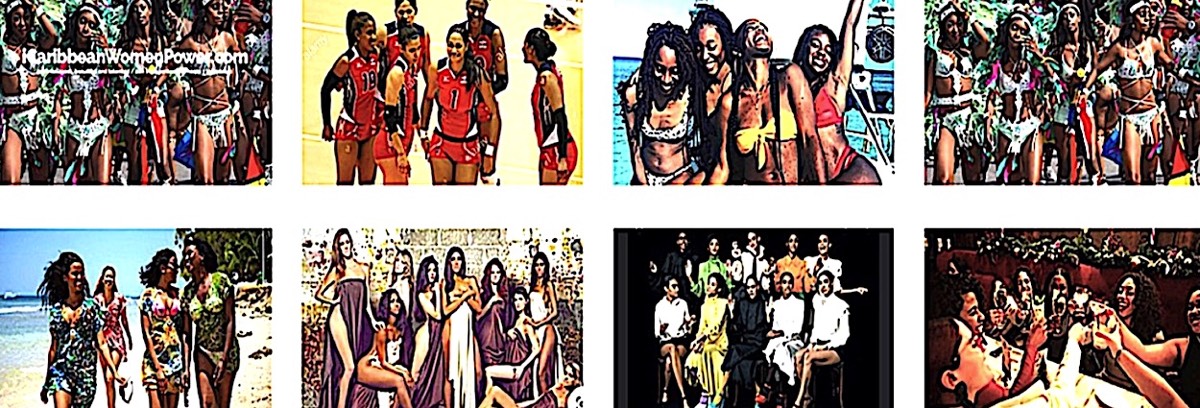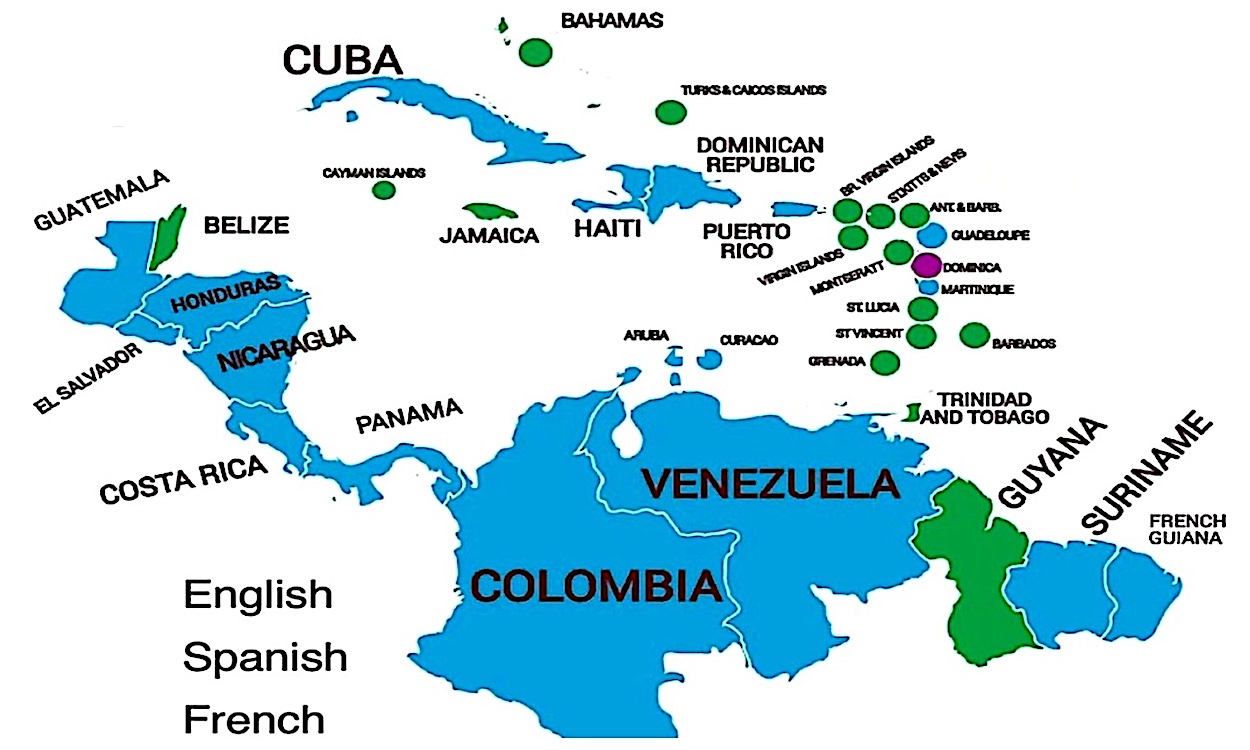
Haiti (French: Haïti; Haitian Creole: Ayiti) is a country in the Caribbean. It occupies the western three-eighths of Hispaniola; the Dominican Republic occupies the eastern five-eighths (63%) of the island. The country has a total area of 27,750 km2 (10,710 sq mi), of which 27,560 km² is land and 190 km² is water.
WIKI

⭐Info & News about Haiti⭐

Haiti, whose population is almost entirely descended from enslaved African people, won independence from France in 1804, making it the second country in the Americas.
britannica.com
⭐Kompa Zouk Music

The dance-style that accompanied compas in 1957, is a two-step dance called carré (square) introduced by Nemours Jean-Baptiste in 1962.[19] As a méringue, a ballroom dance, compas is danced in pairs. Sometimes partners dance holding each other tightly and romantically; in this case often most of the moves are made at the hips.
wiki
⭐The Great Caribbean Climate

The Great Caribbean Climate is moderated by prevailing Trade Winds.
The Caribbean Climate is gloriously sunny with even warmth all year round!
It is moderated by prevailing TradeWinds.
Extreme weather in the Caribbean remains something of a rarity.
It is moderated by prevailing TradeWinds.
Extreme weather in the Caribbean remains something of a rarity.
⭐Caribbean Tourism

Tourism is one of the leading, if not the leading sector on most Caribbean islands. Contributing over US$56.4billion to the region GDP which represents 14.9%, it’s important to have visitors return to the region. Not just for sun, sand, and sea, which is a primary appeal, but so much more. The regions’ rich history, biodiversity, cultural attractions and events, affords visitors who explore a rich and rewarding experience.
⭐Caribbean Music

Caribbean music is colorful and diverse, and comes from complicated influences. It grew out of traditions from African cultures and indigenous peoples, European colonialism, and the unique character of places separated by water.and are the expression of the talent and the immense zest for life of the Caribbean people.
⭐Caribbean Food

Caribbean food is great and diverse, and comes from complicated influences. It grew out of traditions from African cultures and indigenous peoples, European colonialism, and the unique character of places separated by water...
⭐Excellence: Caribbean Rum

High Quality Caribbean Rums are a selection of great rums blended together and aged to perfect maturity.
⭐Caribbean People & Population

Caribbean people are diverse and come from complicated influences. They are the people born in or inhabitants of the Caribbean region or people of Caribbean descent living outside the Caribbean. They are known for their immense zest for life!
Over 50 million people live in 30+ main islands and countries. Many in larger islands like Cuba with 11.4million, Haiti with 10.8million, the Dominican Republic with 10.6million, Jamaica with 2.8million and Trinidad & Tobago with 1.3million people. And at the opposite end is Saint Martin with 31,500, the British Virgin Islands with 30,600, Anguilla with nearly 15,000, Saint Barthelemy with 7,200 and Montserrat with just 5,200 people.
⭐Caribbean People & Population

Various mixes and combinations make the culture and traditions quite diverse.
Early inhabitants of the Caribbean region were from the South American continent more than 7,000 years ago and were members of the Maya, Taino, and Kalinago tribes who settled on the various islands throughout the Caribbean region. When the European started colonizing the Caribbean region beginning in 1492 with Christopher Columbus for Spain, the indigenous population was decimated by disease and war. As the Europeans built up profitable cotton, tobacco and later sugar plantations, over 5 million West African slaves were brought to the Caribbean region as unpaid laborers. And today, many people who live in the Caribbean region are descendants of these 5 million West African slaves. Now, you will also find other ethnicities in the Caribbean including Europeans, Asian Indians, Chinese, Syrians, Lebanese, Jews, Portuguese, Amerindians, and various mixes and combinations which makes the culture and traditions quite diverse. For example, in Trinidad & Tobago descendants of West African slaves are 36.3% of the population and Indo-Trinidadians are 37.6% of the population – so pretty much neck and neck. Indo-Trinidadians are descendants of indentured workers from India who were brought over after slavery was abolished.Many of the region’s inhabitants are descendants from West African slaves, its long history of colonization from European powers including the Spanish, English, French and Dutch, has resulted in a diverse culture across the region. Sure there are similarities, but each country has its own traditions and rich history worthy of exploration.
⭐Languages spoken in the Caribbean

The main languages spoken in the Caribbean are Spanish, English and French.
iCaribbeanLife.com
* English is the official language of Anguilla, Antigua & Barbuda, Bahamas, Barbados, British Virgin Islands, Cayman Islands, Dominica, Grenada, Guyana, Jamaica, Montserrat, St. Kitts & Nevis, St. Lucia, Saint Maarten, St. Vincent & the Grenadines, Trinidad & Tobago, Turks & Caicos Islands, Belize and the United States Virgin Islands.
* Spanish is the official language of Cuba, Dominican Republic, Venezuela, Columbia, Panama, Costa Rica, Mexico, Honduras, Nigaragua and Puerto Rico.
* French is the official language of Guadeloupe, Haiti, Martinique, Saint Barthelemy, French Guyana and Saint Martin. Haitian Creole is also an official language of Haiti.
* Dutch is the official language of Aruba, Bonaire, Curaçao, Saba, St. Eustatius, Saint Maarten, and Suriname.
* Papiamento, a Portuguese and Spanish-based Creole language is also an official language of Aruba, Bonaire, and Curaçao.
Beyond these six main languages, you’ll also find on many of the Caribbean islands a version of creoles and local patois – broken English being spoken.
* Spanish is the official language of Cuba, Dominican Republic, Venezuela, Columbia, Panama, Costa Rica, Mexico, Honduras, Nigaragua and Puerto Rico.
* French is the official language of Guadeloupe, Haiti, Martinique, Saint Barthelemy, French Guyana and Saint Martin. Haitian Creole is also an official language of Haiti.
* Dutch is the official language of Aruba, Bonaire, Curaçao, Saba, St. Eustatius, Saint Maarten, and Suriname.
* Papiamento, a Portuguese and Spanish-based Creole language is also an official language of Aruba, Bonaire, and Curaçao.
Beyond these six main languages, you’ll also find on many of the Caribbean islands a version of creoles and local patois – broken English being spoken.
⭐PALACE-iConsulting

We assist individuals und corporations who desire to live, to invest and conduct business International, in the Dominican Republic, Florida and Switzerland.
Haiti, whose population is almost entirely descended from enslaved African people, won independence from France in 1804, making it the second country in the Americas.
britannica.com